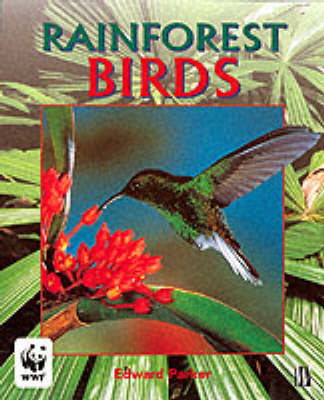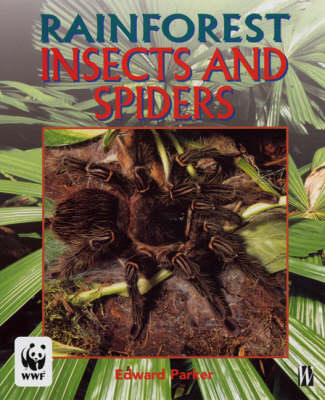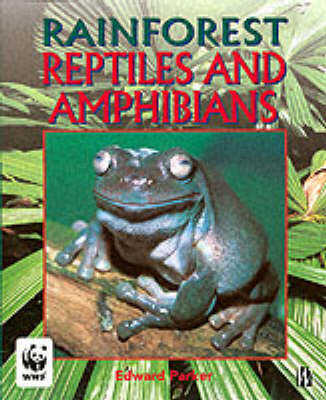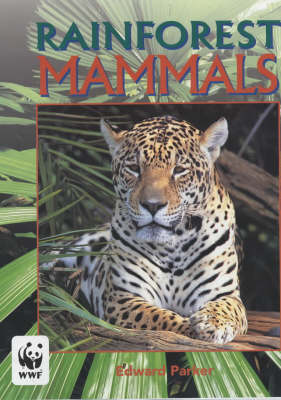Rainforests
6 total works
There are some types of birds that are able to live in a variety of habitats around the world. However, many species of birds, such as the birds of paradise, have adapted and specialized and only live in one habitat, such as the rainforests. Others, such as hummingbirds, have become so specialized that they can only live in very small areas of particular types of rainforests. This title looks at the variety of magnificent birds living in the rainforest - from the toucans and macaws which fly through the canopy while miniature hummingbirds dart from flower to flower. It looks at their homes, food and threats. The book's features include special "links" boxes highlighting the relationships of rainforest birds to those living in other habitats around the world, and "rainforest secrets" revealing amazing facts and stories about some extraordinary birds. This text can be used for the "knowledge and understanding of places" as required for the geography National Curriculum at Key Stage 2. It can also be used for Geography at Key Stage 3, where pupils should study the characteristics and distribution of one major biome, for example tropical rainforests.
The rainforest is teeming with plants and trees that come in a variety of sizes. Some are giants with a stem longer than 150 metres. Others need a magnifying glass to be seen. There are carnivorous plants, plants that hitch rides on other plants, plants that strangle and plants that are deadly poisonous. But how do they all survive and how do they help animals and people survive? This book discovers their secrets. Special 'links' boxes show how plants from the rainforest are used around the world. 'Rainforest secrets' panels give you amazing facts and stories about the forest and 'Fascinating facts' boxes give you exactly that - fascinating facts.
Today, rainforests are home to about 150 million people who live in settlements ranging from traditional villages to huge cities. This book explores these people and their lives, finding out what effects the rainforest people have on the delicate balance of nature in the rainforests. Special 'links' boxes highlight the relationships of rainforests and people to people around the world. 'Rainforest secrets' panels give you amazing facts and stories about the forest and 'Fascinating facts' boxes give you exactly that - fascinating facts.
Insects and spiders are the world's most successful animals. They appeared on earth more than 400 million years ago, long before the dinosaurs existed. Today, even though they can be found almost everywhere on earth, tropical rainforests are home to the vast majority of insects and spiders. It is possible that nine out of every ten insects on earth live in these habitats. This book looks at the huge range of insects and spiders that live in the rainforest, and at their homes, food and threats. Beautifully designed, and illustrated with stunning new photographs, its features include special 'links' boxes highlighting the relationships of rainforest insects to those living in other habitats around the world; and 'Rainforest secrets' revealing amazing facts and stories about some extraordinary insects such as exploding ants and jumping spiders.
The tropical rainforests of the world are home to some of the world's most interesting and unusual reptiles and amphibians - from the colourful poison-arrow frog to the anaconda, the world's largest snake, to the marine turtle and the chameleon. It is believed that the rainforests contain around two-thirds of all the species of reptiles and amphibians that live on the earth. This title looks at some of the these amazing reptiles and amphibians that live in the rainforest, and at their homes, foods and threats. The features of this book include special "links" boxes highlighting the realtionships of rainforest reptiles and amphibians to those living in other habitats around the world, and "rainforest secrets" revealing amazing facts and stories about some extraordinary reptiles and amphibians. This text can be used for the "knowledge and understanding places" as required in the geography National Curriculum at Key Stage 2. It can also be used for geography at Key Stage 3, where pupils should study the characteristics and distribution of one major biome, for example tropical rainforests.
There are literally hundreds of remarkable mammals living in the rainforest - from the magnificent jaguar to the spectacled bear and the cleverly camouflaged sloth. This book looks at the huge range of insects and spiders that live in the rainforest, and at their homes, food and threats. Beautifully designed, and illustrated with stunning new photographs, its features include special 'links' boxes highlighting the relationships of rainforest mammals to those living in other habitats around the world; and 'Rainforest secrets' revealing amazing facts and stories.




